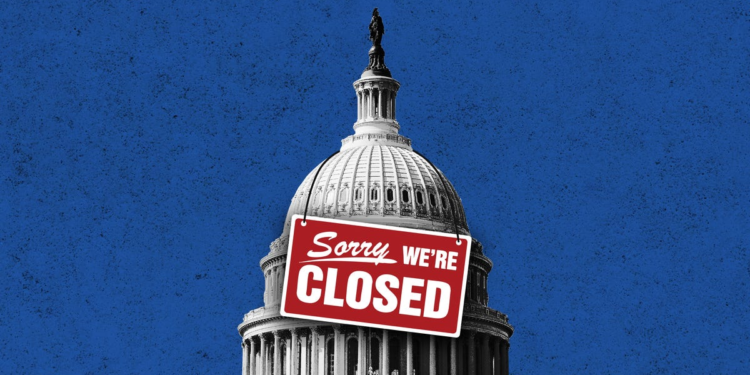Login to Continue Learning
The federal government is likely to shut down on October 1, following President Donald Trump’s and congressional leaders’ failure to reach a funding agreement by September 29. The partial shutdown will start at midnight.
If Congress doesn’t overcome partisan differences and pass a funding bill, the federal government will run out of money at the end of the fiscal year. Since 1976, there have been 21 government shutdowns totaling 161 days, primarily concerning health care spending. Democrats want to prevent Obamacare subsidies from lapsing and reverse cuts to Medicaid funding enacted by Trump’s tax and spend law.
The federal government has closed down 21 times since 1976, with an average of nearly eight days per shutdown. Three shutdowns occurred during Trump’s first term, but one lasted only a few hours. President Jimmy Carter had the most shutdown days at 56 from 1977 to 1979.
During a government shutdown:
– Non-essential federal workers will be furloughed or sent home without pay.
– Essential employees in critical operations like defense, energy, and agriculture will continue working but without pay. They are reimbursed when the shutdown ends.
– The Office of Management and Budget has instructed agencies to prepare for mass layoffs.
Key sectors that remain open during a shutdown include:
– Defense: Branches of the U.S. military and Coast Guard
– Law enforcement and protection: Secret Service, FBI, DEA, etc.
– Border security: Most Border Patrol officers, ICE agents, customs officials
– Prisons: Officers
– Travel: TSA agents at airports, air-traffic controllers
– Mail: U.S. Postal Service
– Taxes: IRS
In 2019, nearly 50,000 Coast Guard employees went without pay for 35 days during a shutdown.
Contributing: Joey Garrison, Iris Seaton, Terry Mosely, Olivia Munson, Riley Beggin, Sudiksha Kochi, Eric Lagatta, Savannah Kuchar, Fernando Cervantes Jr., Jim Sergent
Source: USA TODAY Network reporting and research; Reuters



















